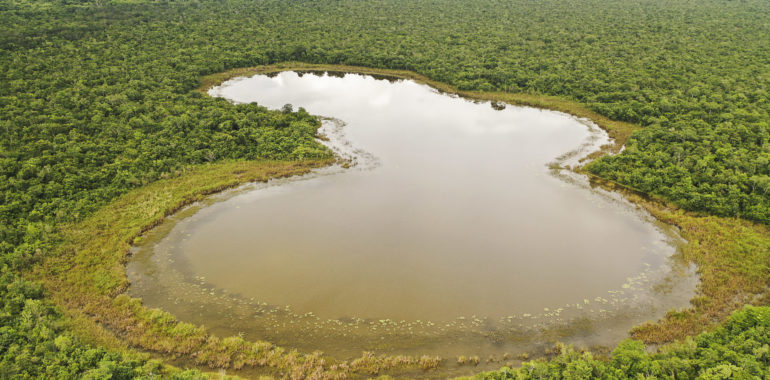Did you know that in Yaxha, Nakum and Naranjo National Park there are cenotes attached to the Yaxha Lagoon? If you visit this place, we recommend you take a boat ride and ask the boatman to take you to see the cenotes. You must take into account that in the dry season you may not be able to enter by boat but in the rainy season, when the water rises, you can enter easily.
A cenote can be defined as a reservoir of spring water located in characteristic geological depressions. It is part of the aquifers, which are interconnected between underground galleries.
Cenotes are recharged with water coming mainly from rains, which is retained by the vegetation and passes through rocks and is stored in them. When the water is infiltrated, it recharges the aquifer and much of the water reaches the depression to recharge it.
They can be formed when the karst stone surface dissolves, collapses and calcification occurs:
- Rock dissolves through rainwater that is acidified by carbon dioxide in the air and by that from the decomposition of organic matter. When salt water and fresh water meet, it is where there is a greater dissolution of limestone rock.
- Collapse occurs when the low sea level (in glacial times) meets the water level of the aquifer, leaving a cave full of air that, due to lack of support, causes the ceiling to collapse.
- The karstification forms stalactites and stalagmites, typical columns of caves and cenotes, which are formed thanks to the previously dissolved material.
They can be classified by their different shapes, their age, and by its proximity to the coastline.
Cenotes are important because of the ecosystem connectivity they create through underground galleries and the biodiversity they shelter. They supply water for various habitats and life forms, as well as for humans and their economic activities. From the cultural point of view, they are also of great importance for tourism and, on the other hand, for the Mayan population due to the ceremonies they perform there.

